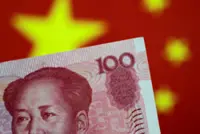KUALA LUMPUR: The ringgit continues to stay at historically weak levels at near RM4.40 per US dollar but hopes of a potential reopening of China’s economy could revive short-term interest in the local currency.
According to economists and currency strategists, there are several factors that would influence the direction of the local currency but they agree that the factor seems to be the dominant one is the yuan’s movement.
Already a subscriber? Log in
Save 30% OFF The Star Digital Access
Cancel anytime. Ad-free. Unlimited access with perks.





